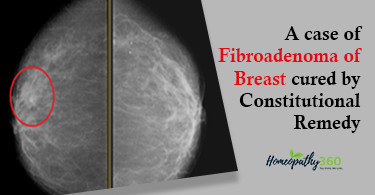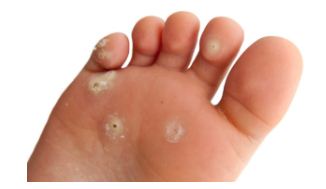INTRODUCTION:-
Corona virus is one of the major pathogens that primarily targets the human respiratory system. Previous outbreaks of corona viruses (CoVs) include the severe acute respiratory syndrome (SARS)-Co-V and the Middle East respiratory syndrome (MERS)-Co-V which have been previously characterized as agents that are a great public health threat. Coronavirus disease (COVID-19) is caused by SARS-COV2 and represents the causative agent of a potentially fatal disease that is of great global public health concern.
CLINICAL MANIFESTATIONS:-
The symptoms of COVID-19 infection appear after an incubation period of approximately 5-7 days. The period from the onset of COVID-19 symptoms to death ranged from 6 to 41 days with a median of 14 days. This period is dependent on the age of the patient and status of the patient’s immune system. The most common symptoms at onset of COVID-19 illness are fever, cough, and fatigue, while other symptoms include sputum production, headache, haemoptysis, diarrhoea, dyspnoea, and lymphopenia.
PATHOGENESIS:-
Based on the pathological evidences that are likely infected, COVID-19 can be divided into three phases that correspond to different clinical stages of the disease.
FIRST STAGE: Asymptomatic state (Initial 2-3 days of infection)
The inhaled virus SARS-CoV-2 likely binds to epithelial cells in the nasal cavity and starts replicating. ACE2 is the main receptor for both SARS-CoV2 and SARS-CoV. In vitro data with SARS-CoV indicate that the ciliated cells are primary cells infected in the conducting airways. However, this concept might need some revision, since single-cell RNA indicates low level of ACE2 expression in conducting airway cells and no obvious cell type preference. There is local propagation of the virus but a limited innate immune response. At this stage the virus can be detected by nasal swabs. Although the viral burden may be low, these individuals are infectious. The RT-PCR value for the viral RNA might be useful to predict the viral load and the subsequent infectivity and clinical course. Perhaps super spreaders could be detected by these studies. For the RT-PCR cycle number to be useful, the sample collection procedure would have to be standardised. Nasal swabs might be more sensitive than throat swabs.
SECOND STAGE: Response of Upper respiratory tract airway & conducting airway (4-7 days):-
The virus propagates and migrates down the respiratory tract along the conducting airways, and a more robust innate immune response is triggered. Nasal swabs or sputum should yield the virus (SARS-CoV-2) as well as early markers of the innate immune response. At this time, the disease COVID-19 is clinically manifest. The level of CXCL10 (or some other innate response cytokine) may be predictive of the subsequent clinical course. Viral infected epithelial cells are a major source of beta and lambda interferons. CXCL10 is an interferon responsive gene that has an excellent signal to noise ratio in the alveolar type II cell response to both SARS-CoV and influenza. CXCL10 has also been reported to be useful as disease marker in SARS. Determining the host innate immune response might improve predictions on the subsequent course of the disease and need for more aggressive monitoring. Upto 75 – 80% patients reach upto this stage and recover
Third Stage: Hypoxia, ground glass infiltrates, and progression to ARDS
Nearly 25 – 20% of the infected patients will progress to stage 3 disease and will develop pulmonary infiltrates and some of these will develop very severe disease. Initial estimates of the fatality rate are around 2%, but this varies markedly with age. The fatality and morbidity rates may be revised once the prevalence of mild and asymptomatic cases is better defined. The virus now reaches the gas exchange units of the lung and infects alveolar type II cells. Both SARS-CoV and influenza preferentially infect type II cells compared to type I cells. The infected alveolar units tend to be peripheral and subpleural. SARS-CoV propagates within type II cells, large number of viral particles are released, and the cells undergo apoptosis and die. The end result is likely a self-replicating pulmonary toxin as the released viral particles infect type II cells in adjacent units. I suspect areas of the lung will likely lose most of their type II cells, and secondary pathway for epithelial regeneration will be triggered.
HOMOEOPATHIC APPROACH AND MANAGEMENT OF COVID-19 :-
The preventive aspect of Homoeopathy is well known, and historically, Homoeopathy has reportedly been used for prevention during the epidemics of Cholera, Spanish Influenza, Yellow fever, Scarlet fever, Diphtheria, Typhoid etc.66 The genus epidemicus is the remedy found to be most effective for a particular epidemic once data have been gathered from several cases. This concept was first put forth by Samuel Hahnemann in the Organon of Medicine, Aphorism 241, as “…each single epidemic is of a peculiar, uniform character common to all the individuals attacked, and when this character is found in the totality of the symptoms common to all, it guides us to the discovery of homoeopathic (specific) remedy suitable 15 for all the cases….” There is anecdotal evidence that homeopathy was successful during the Spanish flu epidemic of 1918 to 1919, in which at least 20 million people died worldwide, more than 500,000 in the United States alone.
As in all collective diseases, the image of the clinical picture emerges after observing a considerable number of patients; Hahnemann suggests observing several cases in order to paint “the full picture of the disease”, “totality of characteristic signs and symptoms” or “epidemic genius”, according to the homeopathic connotation of this term. The Genus epidemicus is identified through observation of several cases of an epidemic disease, and analysing the symptomatology of those cases for the most indicated medicine. This medicine is the preventive medicine for the ongoing epidemic of that disease.
The Health advisory given by Ministry of AYUSH against corona virus infection included Homoeopathic medicine Arsenicum album – 30 as a possible preventive for flu like illness such as coronavirus infection. Scientific Advisory Board considered that the same medicine has been advised for prevention of Influenza Like Illness. Arsenic album as one of the constituents in a formulation has been shown to affect HT29 cells and human macrophages. Also, it showed ↓NF-κB hyperactivity (reduced expression of reporter gene GFP in transfect HT29 cells), ↓TNF-α release in macrophages. More over Arsenic album is a common prescription in the cases of respiratory infections in day to day practice.





